Recent Articles
Popular Makes
Body Types
2018 Honda Clarity Plug-in Hybrid Road Test and Review

2018 Honda Clarity Plug In Hybrid hero ・ Photo by Honda
The first thing to know about the 2018 Honda Clarity PHEV is that PHEV stands for plug-in hybrid electric vehicle. The second is that the plug-in part is not mandatory: As the word "hybrid" suggests, there’s still a gasoline engine in addition to the electric motor, so no one will be stuck by the side of the road if they run low on battery power.
This is the third mid-size sedan to bear the Clarity name. The initial version was powered by hydrogen fuel cells, and it was followed by a solely electric vehicle. The whole Clarity project is Honda’s green-car initiative aimed at bringing low-emissions technology more into the mainstream. This plug-in hybrid model promises to be the most popular yet.
Pricing is right.
The 2018 Honda Clarity PHEV starts at $34,290, while the swankier Touring trim is priced from $37,490. For some context, Honda's Accord Hybrid (not a plug-in) starts at around $29,000. The 2018 Ford Fusion Energi, which is a plug-in hybrid and a direct rival, begins at the $34,000 mark. So Honda is pitching this in the right area; the Clarity PHEV is all the more tempting for its affordability.
Another key point is that the Clarity PHEV is available for sale throughout the United States. The fuel cell version, however, is only offered in California and only for lease.
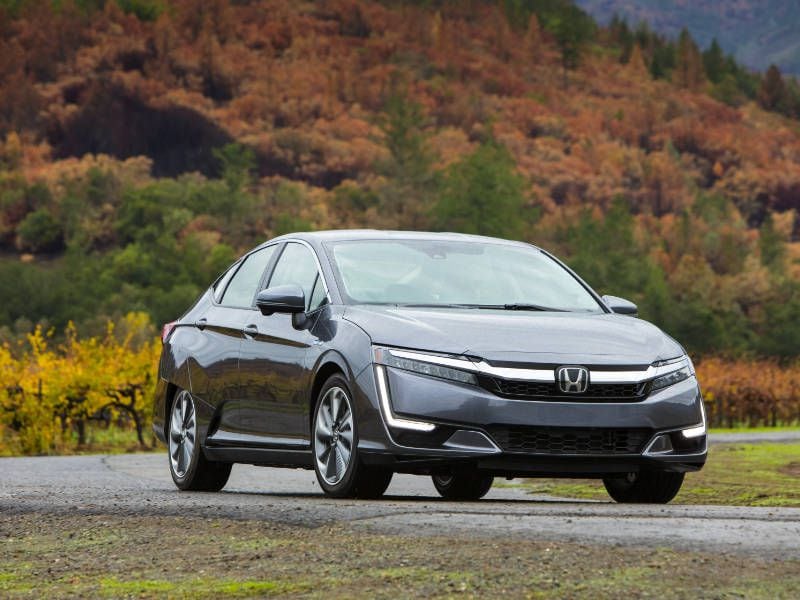
Photo by Honda
Plenty of Equipment
Standard equipment is generous, including 18-inch alloy wheels, heated front seats, a rearview camera, and Apple CarPlay/Android Auto smartphone integration, plus an array of advanced safety features — known as Honda Sensing — including adaptive cruise control, forward collision mitigation, road departure mitigation and lane-keeping assistance. Meanwhile, the LaneWatch system shows images from a camera on the passenger-side mirror in the central display.
For over $34,000, a leather-covered steering wheel would have been nice. But that requires splashing out for the Touring version. This trim also brings navigation, power adjustment for the front seats with drivers-side memory settings, leather upholstery, and simulated suede dashboard trim. This is as close as Honda gets to its luxury marque, Acura.
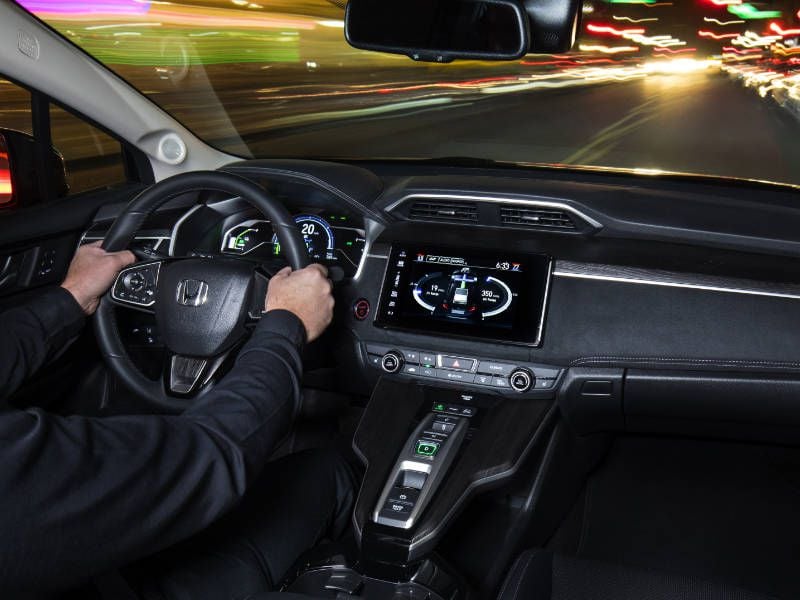
Photo by Honda
Options Optional
It looks like Honda has decided to keep the buying process as simple as possible. Apart from a handful of items like rear parking sensors, illuminated scuff plates, all-season floor mats and a trunk shelf organizer, there really aren’t many ways to spend more money. This says a lot about the level of standard equipment.
Those who want every bell and whistle should just go for the Touring trim, which also offers ambient cabin lighting as an option.
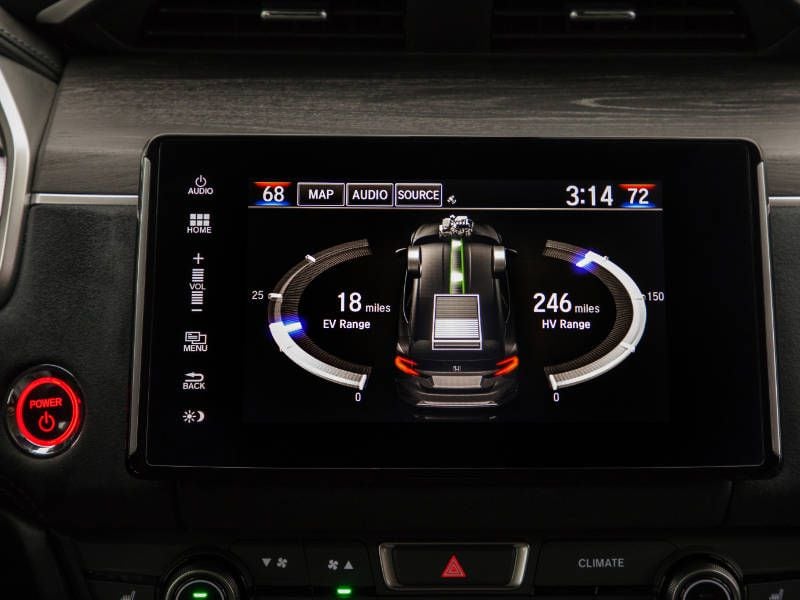
Photo by Honda
Interior Odds and Ends
Inside the Clarity are some clever and odd things. One piece of cleverness is how the center console has a “floating” section that brings the transmission’s controls closer to the driver’s fingertips while also forming a storage area underneath. An example of oddness is the glass section at the top of the trunk lid, which gives the illusion of a second parcel shelf.
In general, though, the cabin is pleasant and welcoming, and it offers good outward visibility.
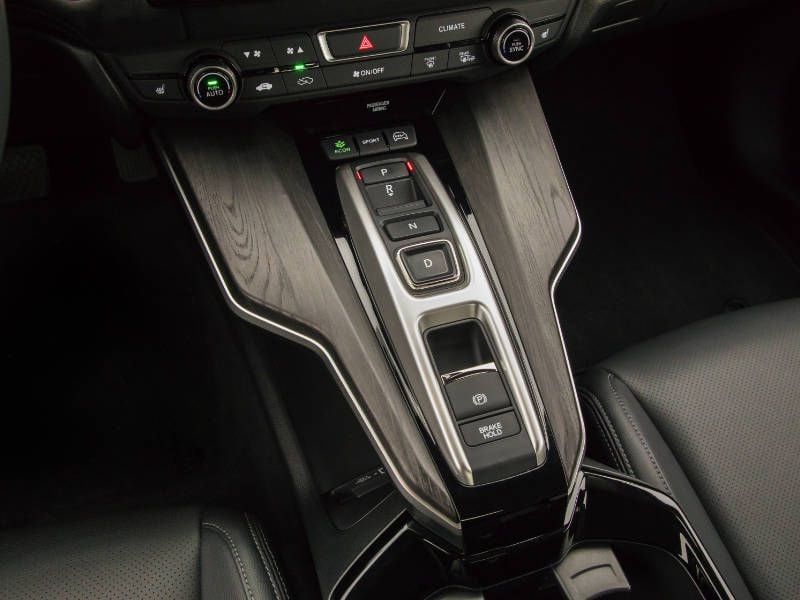
Photo by Honda
Unique Design is Not For Everyone
Just like the inside, the Clarity PHEV's exterior styling language sets it apart from the rest of the Honda lineup (with the exception of the other Clarity versions). People will have their own opinions on the looks, but there’s a good argument for differentiating these more eco-friendly models as opposed to just making it look like a close relative to the Accord. The Clarity looks quite sleek considering it has to accommodate five people. Overall, it’s an arguably more agreeable design than the standard approach applied to the rest of the Honda range.
The plastic covers over the alloy wheels look smart, and they also help with the aerodynamics, reducing fuel usage.

Photo by Honda
Powerful Enough Powertrain
The combined output from a 1.5-liter four-cylinder gasoline engine and an electric motor (powered by a lithium-ion battery) is a respectable 212 horsepower and 232 lb-ft of torque, driving the front wheels. However, despite some weight-saving measures — such as aluminum components here and there — the Clarity PHEV is not light: It weighs around 4,050 pounds. A regular Accord is about 3,300 pounds. But this amount of power is still sufficient to take the stress out of reaching freeway speeds and proved enough punch for most overtaking situations.
Despite the plug-in hybrid technology, there’s nothing daunting here to put off the driver who merely wants to get from A to B.
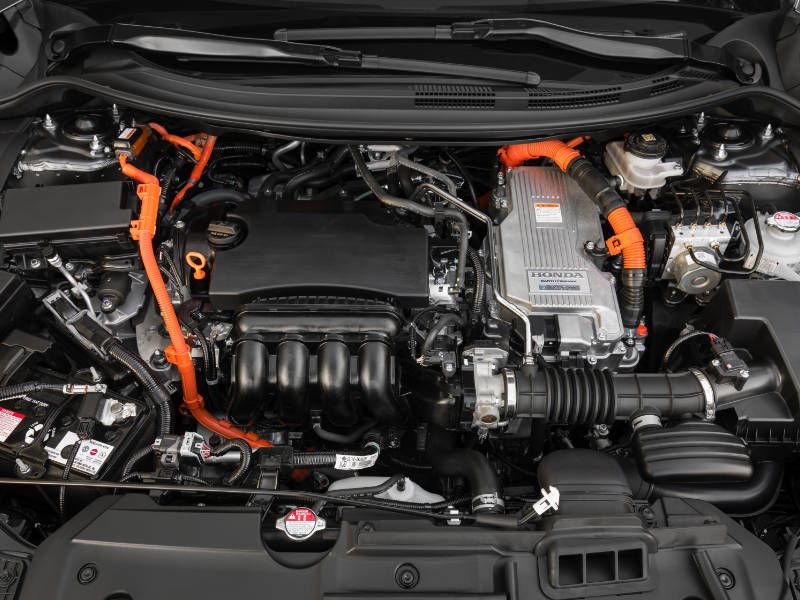
Photo by Honda
Eco-Friendly as Expected
Using battery power alone, the Clarity PHEV can cover up to 47 miles, which is a really useful amount. Those with short commutes may never need to buy gas until they go on longer trips. With those miles factored in, the Environmental Protection Agency puts consumption at the equivalent of 110 mpg. In its gas-electric hybrid mode, it's rated for 44 mpg city, 40 mpg highway and 42 mpg combined.
Using a 240-volt/Level 2 charger, the battery is completely replenished in 2.5 hours. Factor in its seven-gallon gas tank and total range is 340 miles.

Photo by Honda
Cargo, Comfort, and Quiet
Never underestimate how much a quiet cabin contributes to the overall feeling of comfort, and how it fights against fatigue. The Clarity PHEV has a wonderfully hushed demeanor (thanks to things like acoustically treated glass), well-cushioned seats and — in the front row, at least — plenty of occupant space. In fairness, it only gets a little constricting in the back if someone is 6 feet tall or more. The overall ride quality also leans more toward supple than sporty.
The PHEV is absolutely the best Clarity choice if cargo space is important. The other two versions have less trunk volume because of batteries or hydrogen tanks. This model has 15.5 cubic feet, which is enough to take four golf bags or a week’s groceries.
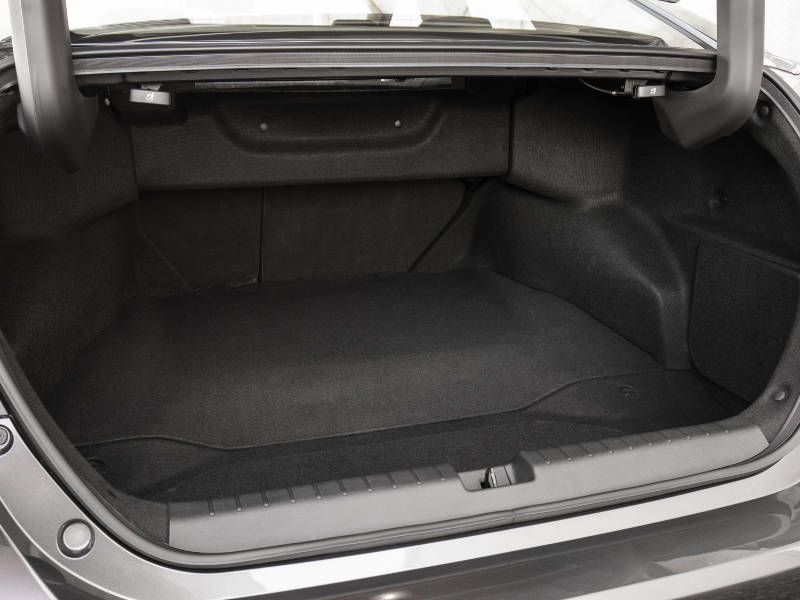
Photo by Honda
Performance is equal to the task.
The powertrain has Econ, Normal and Sport driving modes, but don’t get too excited by the third one. It just perks up acceleration a little. But let’s assume that most speed addicts are currently reading the newest Corvette review and potential PHEV buyers are a different breed.
Honda states weight distribution as 57/43 nose to tail. In practice, it feels a touch heavier than that at the front. Even so, the front wheels respond to steering inputs with a pleasing promptness. It’s not exactly sporty, but not sluggish either. Expect a smooth, easy drive rather than a lot of excitement and you won’t be disappointed.
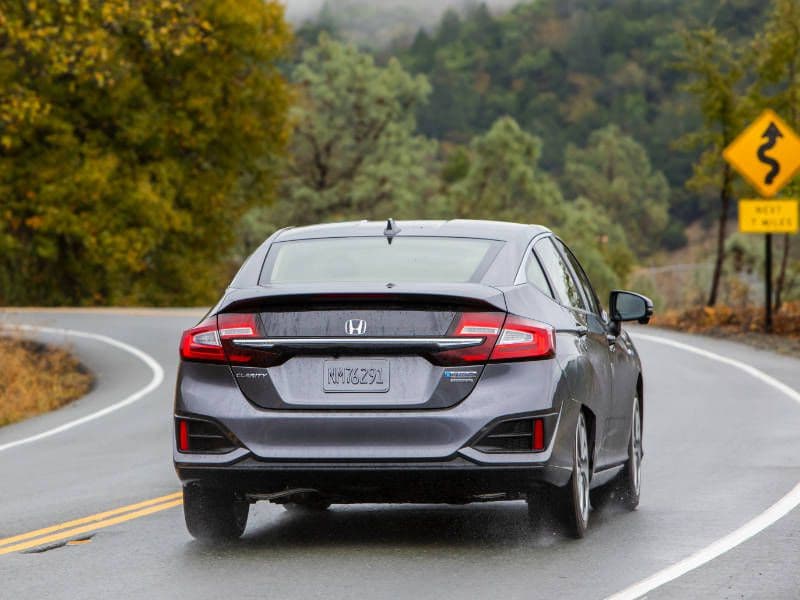
Photo by Honda
Final Thoughts
All it takes is for drivers to adapt their habits slightly and charge the battery — which can easily be done at home overnight or perhaps at work — and they can take advantage of gasoline-free travel. The Clarity's electric-only range compares well with rivals; for example, the Ford Fusion Energi only manages 20 miles.
Full power from both the engine and the electric motor is on the right side of adequate, and long road trips are possible. The Clarity PHEV has a premium air, especially in Touring trim, making its appeal broader than that of a regular Honda. And there are federal and state incentives for choosing a PHEV, which ultimately reduce the purchase price.
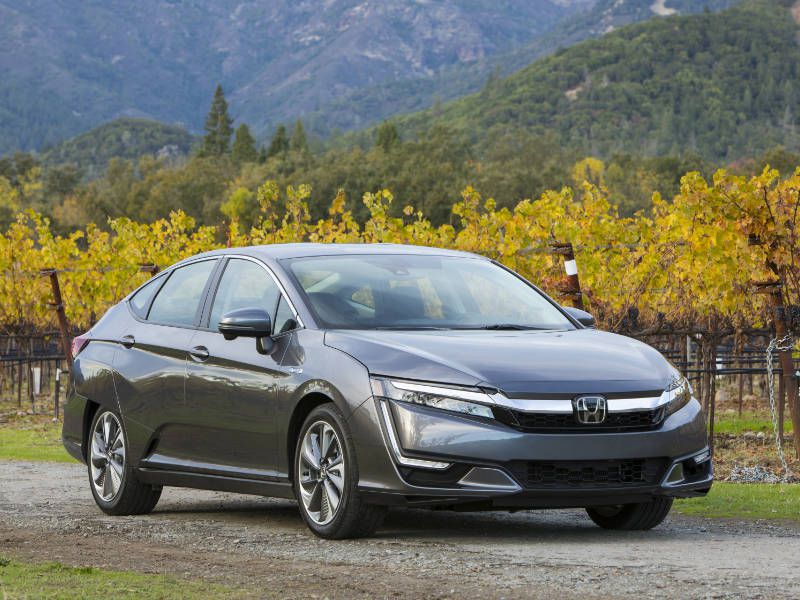
Photo by Honda